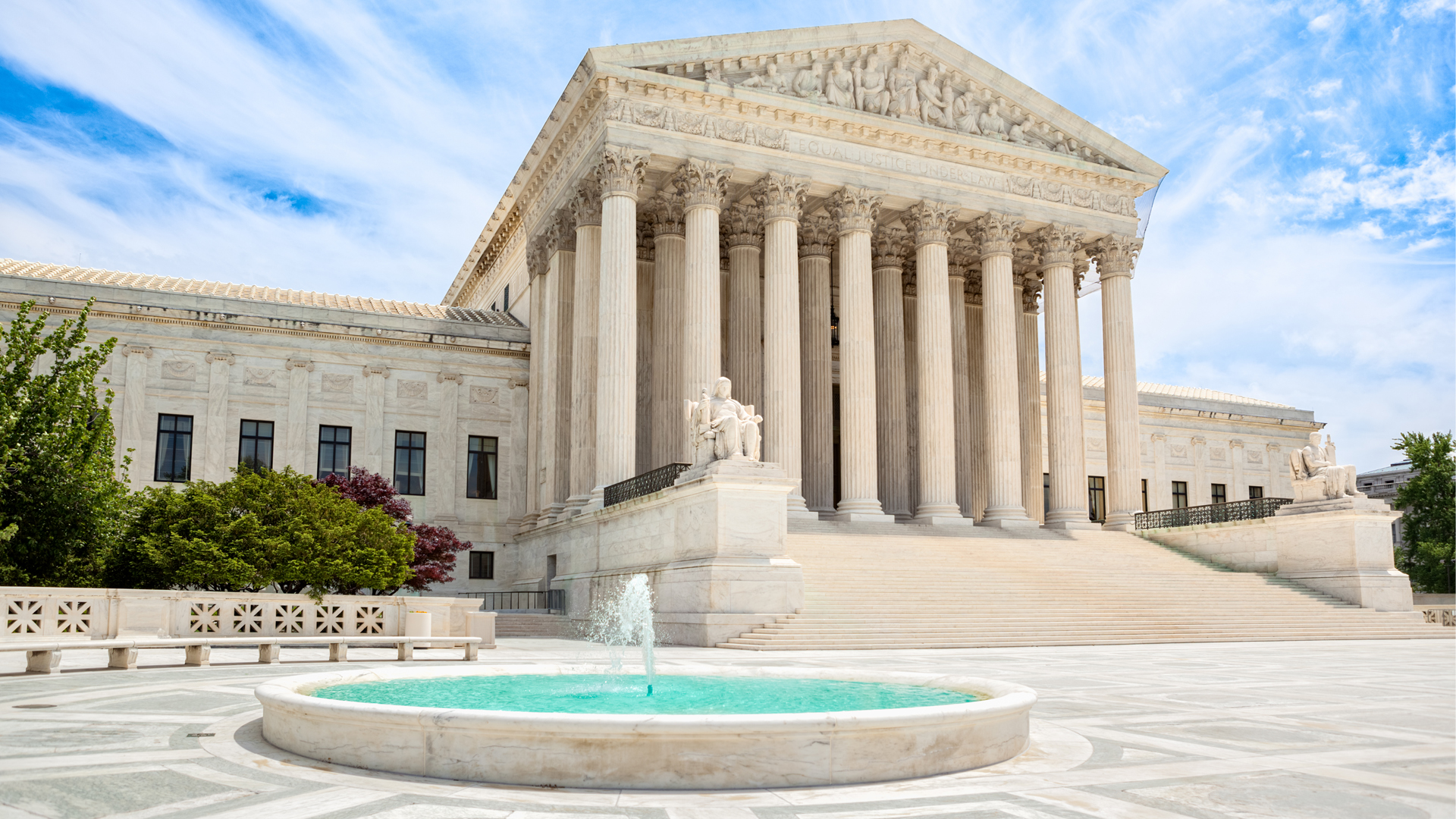“Chevron is overruled. Courts must exercise their independent judgment in deciding whether an agency has acted within its statutory authority.” – Chief Justice John Roberts
The US Supreme Court’s ruling on the Chevron doctrine in Loper Bright Enterprises v. Raimondo (Loper), will profoundly impact multiple industries regulated by federal agencies that have grown accustomed to being the ultimate arbiter of ambiguous language in their applicable laws, rules and regulations. Those days are over—courts no longer have to defer to federal agencies when resolving such ambiguities.
Originally decided in 1984, Chevron became a watershed decision in which courts used its two-part test as the standard for interpreting when a statute is ambiguous or silent, deferring to the administrative agency’s reasonable interpretation of the statutory language. Chevron U.S.A. v. Natural Resources Defense Council, 467 US 837 (1984). In recent years, the Court had moved away from applying Chevron when examining the permissibility of executive branch action. In a 6-3 decision, authored by Chief Justice Roberts, the majority opinion in Loper references that “This Court has not deferred to an agency interpretation under Chevron since 2016.” Before Loper, however, lower courts had continued to defer to agency interpretations, and thus the decision is significant when plaintiffs in regulated industries challenge perceived regulatory overreach before these lower courts.
The fall of Chevron will lead to a new era in which courts will serve as the final arbiters of statutory interpretation, as Chief Justice Roberts and the Court‘s majority believe was intended by the Administrative Procedure Act (APA). Decades of deference granted to federal regulators, which impact the ability of federal agencies to interpret statutes, promulgate binding regulations and issue sub-regulatory guidance, will be called into question and limit the ability of federal agencies to act when Congress fails to address unforeseeable and unknown complexities in a statutory scheme.
While the Loper case specifically invalidates conservation regulations, its impact will be felt across many regulated industries, including healthcare and securities. For over 40 years, when courts have had to interpret ambiguous statutes resulting from agency rulemaking, they have looked to "Chevron deference" to decide how much weight to give to the executive branch's interpretations. Historically, courts have deferred to agencies' "reasonable" interpretations because of their expertise, experience, and political accountability in resolving statutory ambiguity.
In the area of healthcare regulation, several key laws give federal agencies the authority to make and implement rules. These laws include the Food, Drug, and Cosmetic Act, the Public Health Service Act, the laws establishing Medicare and Medicaid, the Medicare Modernization Act, the Affordable Care Act, the 21st Century Cures Act and the No Surprises Act. Congress delegated implementation of these laws to the US Department of Health and Human Services (HHS) and agencies within HHS, such as the Centers for Medicare and Medicaid Services, the Food and Drug Administration and the Centers for Disease Control and Prevention. These agencies have decades of extensive technical expertise in administering laws and programs found in statutes written and passed by the US Congress.
In the realm of securities regulation, federal statutes including the Exchange Act, the Securities Act, the Advisers Act and the Investment Company Act authorize the US Securities and Exchange Commission (SEC) to promulgate rules that impact a large swath of financial markets, including with respect to public companies, broker-dealers, investment advisers and mutual funds.
Chevron and Auer agency deference
Legal challenges to agency interpretation have required arguing within the context of precedential law that would address the Chevron deference analysis until today. The first step in a Chevron analysis is to “discern whether Congress had directly spoken to the precise question at issue.” Id at 842. If the intent of Congress is clear, that was the end of the matter. However, if the statute were silent or ambiguous, a court could not simply impose its own interpretation but rather defer to the governing agency.
When an agency interprets its own rule, courts defer to an agency’s informal guidance under an “Auer deference.” Auer v. Robbins, 519 U.S. 452 (1997). Unlike Chevron deference, Auer deference requires that courts consider certain limits, including (1) whether the regulation is genuinely ambiguous and the interpretation is reasonable, (2) whether the regulation is the agency’s official position from someone who speaks on behalf of the agency, (3) whether the question at issue implicates the agency’s expertise and (4) whether the interpretation is a fair and considered interpretation and not just an ad hoc justification. Kisor v. Wilkie, 588 U.S. 558 (2019).
Loper’s impact on executive power
Loper holding
Citing Marbury v. Madison that “[i]t is emphatically the province and duty of the judicial department to say what the law is,” the majority opinion held that “Courts must exercise their independent judgment in deciding whether an agency has acted within its statutory authority, as the APA requires.” Further, the Court’s majority addresses the conflict between Chevron and the APA, stating that “courts need not and under the APA may not defer to an agency interpretation of the law simply because a statute is ambiguous.” In writing the opinion for the majority, Chief Justice Roberts further finds that “At best, Chevron has been a distraction from the question that matters: Does the statute authorize the challenged agency action?”
In the ruling, the Court determined that while Congress may still confer discretionary authority on agencies, such authority is subject to judicial oversight. Lastly, the Court established that while courts may rely on agency interpretation as informative, they are not obligated to follow them, especially when the agency interpretation is issued around the same time as the underlying statute. In writing for the majority, Chief Justice Roberts rejected the government’s argument that an agency’s specialized expertise warrants deference:
Chevron’s presumption is misguided because agencies have no special competence in resolving statutory ambiguities. Courts do. The Framers, as noted, anticipated that courts would often confront statutory ambiguities and expected that courts would resolve them by exercising independent legal judgment.
In her dissent, Justice Elena Kagan described the consequences of the Court’s opinion as “likely to produce large-scale disruption.” Further, she foreshadowed that “[i]n one fell swoop, the majority today gives itself exclusive power over every open issue—no matter how expertise-driven or policy-laden—involving the meaning of regulatory law.”
Potentially conflicting interpretations across court jurisdictions
The theory underlying the deference afforded agencies in Chevron is that experts who work within federal agencies are often better attuned to the impact of new laws and how they should be implemented within the context of specific industry practices, policies and trends. For example, Judge Friendly once noted that Medicaid law is “almost unintelligible to the uninitiated.” For heavily regulated industries like healthcare and securities, in the wake of Loper, judges across the US, many of whom are unfamiliar with the complexity of the relevant regulatory schemes, may offer potentially conflicting interpretations of the same statute, rule or regulation, thereby creating challenges for industry participants who need to conduct business throughout the country. Of course, the theory underpinning Chevron has its limitations as regulators’ views can change over time. Afterall, the heads of federal agencies promulgating and enforcing their rules and regulations are political appointees who are not necessarily constrained by prior agency practice.
Increased litigation against agency rules
Loper is sure to embolden prospective plaintiffs who feel that various federal agencies have been operating beyond the confines of their statutory authority.
In its amicus brief in Loper, the American Cancer Society mentioned the possibility of a “post-Chevron litigation tsunami.” The majority in Loper stated that previous cases relying on Chevron deference may still rely on those decisions as judicial precedent “despite the Court’s change in interpretative methodology.” Healthcare organizations currently challenging flawed interpretations of statutes found in regulations are well-positioned to move forward under a new standard of review. Courts will now have more freedom to use their own judgment under the APA without the constraints of meeting the deference standard outlined in Chevron. This change can be beneficial in cases of agency overreach.
Additionally, rules that have been challenged in court may still be subject to another round of litigation as parties test the reach of Loper. Some already litigated rules potentially at risk include, for example, rules on Medicare Part A, rulemaking implementing the No Surprises Act, the long-term care facilities arbitration rule, price transparency rule, site neutrality, and more. Congress will need to be clearer and generally more prescriptive in legislation to avoid later scrutiny of executive branch attempts to interpret gaps in a statute or otherwise ambiguous provisions.
In the securities arena, the SEC has already been suffering multiple litigation losses to plaintiffs challenging various rulemakings. The SEC’s much anticipated and highly debated climate risk-related disclosure rules, which received thousands of submissions during the public comment process, are the subject of pending litigation. Similarly, plaintiffs recently prevailed in vacating the Private Fund Adviser Rule in Nat’l Ass’n of Priv. Fund Managers v. SEC, No. 23-60471, 2024 U.S. App. LEXIS 13645 (5th Cir. June 5, 2024). After Chevron, it is even more likely that courts will scrutinize agency interpretations of broad antifraud statutes. The demise of Chevron may result in the SEC and other agencies taking more measured approaches where the source of their supposed authorization is not clear.
If you have any questions about the Loper decision and how it may impact your work, please do not hesitate to contact us.
Special thanks to Summer Associate Abel Chacko (Houston) for his assistance in the preparation of this content.









